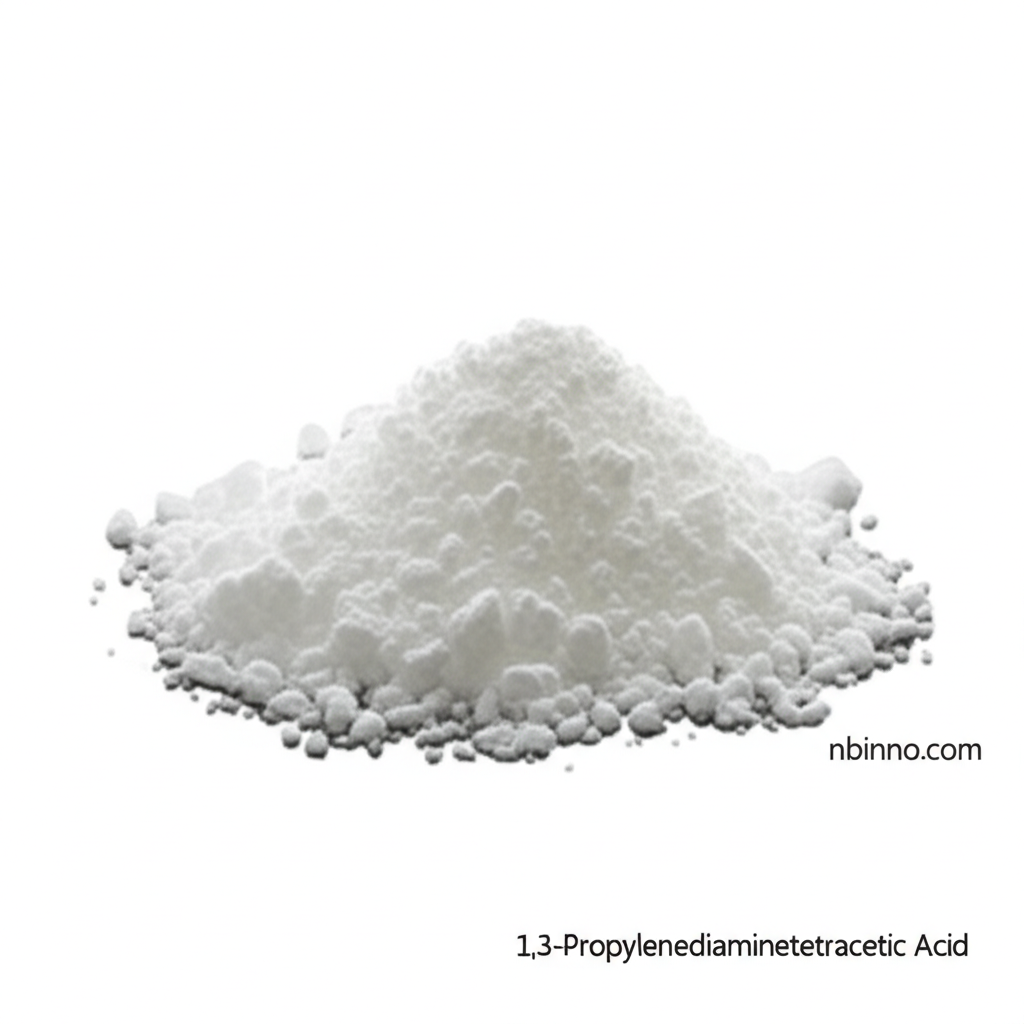Discover the Versatility of 1,3-Propylenediaminetetraacetic Acid (PDTA)
Explore the essential properties and applications of this key chemical intermediate for research and synthesis.
Get a Quote & SampleProduct Core Value

1,3-Propylenediaminetetraacetic Acid
1,3-Propylenediaminetetraacetic Acid (PDTA) is a valuable chemical compound with the CAS number 1939-36-2. Its molecular formula is C11H18N2O8, and it has a molecular weight of 306.27. PDTA is characterized by its appearance as white crystals and plays a significant role as an intermediate in various organic synthesis processes. It is also employed in biological research, highlighting its dual utility across different scientific disciplines.
- Leveraging PDTA as a key organic synthesis intermediate enables efficient pathways for creating complex molecules.
- Precise chemical properties of PDTA make it a reliable component for demanding biological research applications.
- Understanding the CAS 1939-36-2 applications is crucial for researchers seeking effective chemical solutions.
- Sourcing high-purity PDTA ensures consistent results in both laboratory experiments and industrial synthesis.
Advantages Offered by PDTA
Versatile Intermediate
As a versatile organic synthesis intermediate, PDTA facilitates the development of novel chemical compounds with diverse applications.
Research Applications
Its utility in biological research makes PDTA an indispensable tool for scientists exploring new biological pathways and mechanisms.
Chemical Purity
The high purity of PDTA, often exceeding 98%, guarantees reliable performance and reproducible results in critical applications.
Key Applications
Organic Synthesis
PDTA serves as a crucial building block in organic synthesis, allowing chemists to construct more complex molecular structures efficiently.
Biological Research
In biological research, PDTA is utilized for its specific chemical properties, aiding in experiments and studies related to cellular processes.
Chemical Intermediates
As a valuable chemical intermediate, PDTA bridges the gap between raw materials and final specialized chemical products.
Fine Chemical Production
The compound's characteristics make it suitable for use in the production of fine chemicals, demanding precision and reliability.
